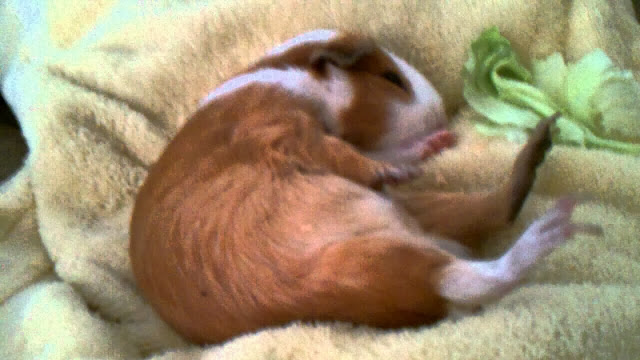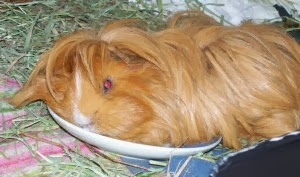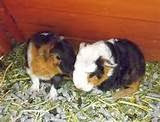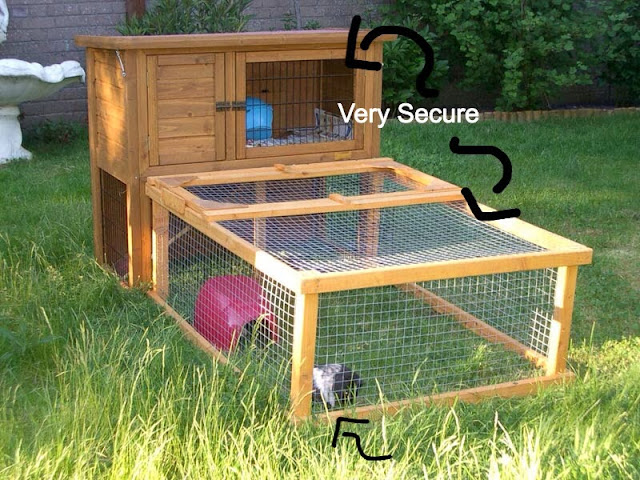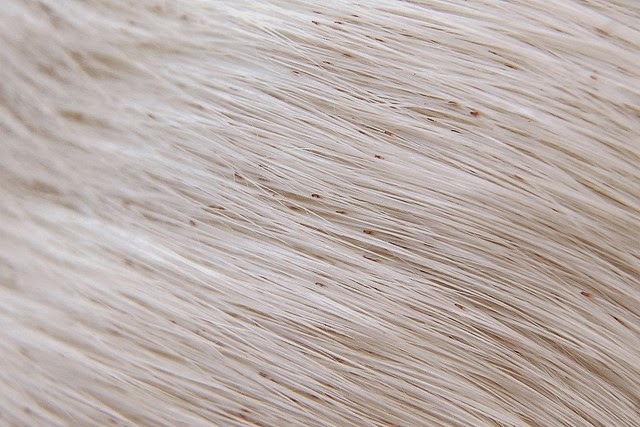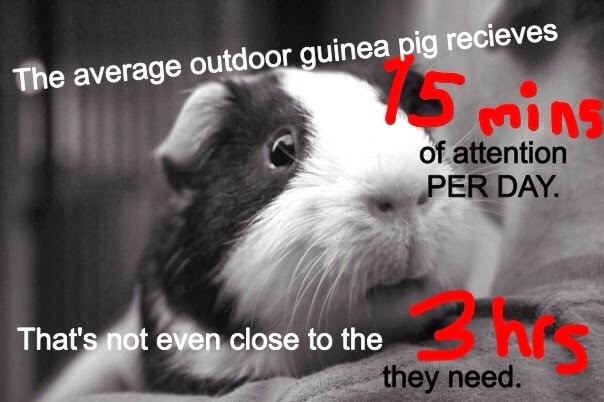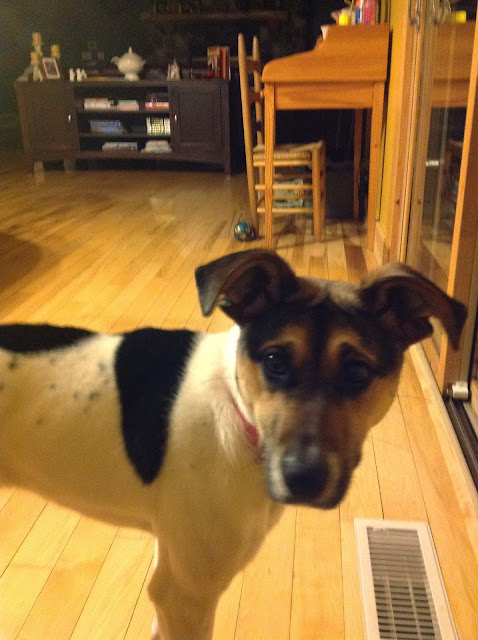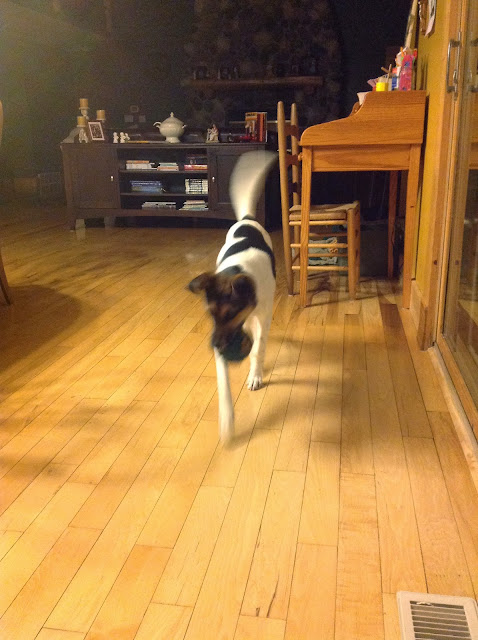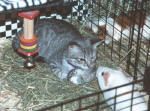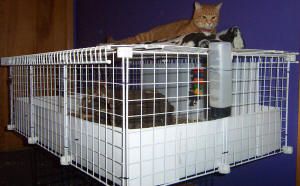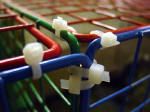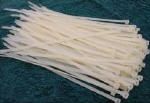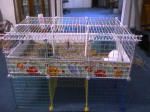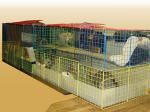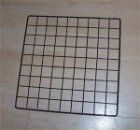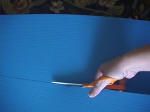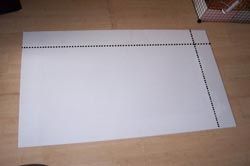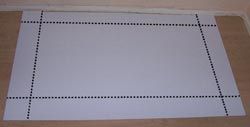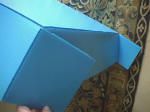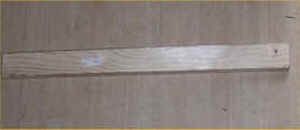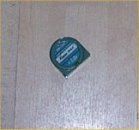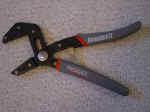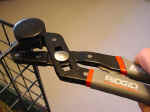And here is another great website link that thoroughly describes this. http://guineapigsaustralia.com/oudoor%20housing.htm
And a UK website has a very nice statement in an article I've read:
"Indoor guinea pigs can have a spacious cage custom built around or over your furniture and storage. Indoor cages smell less without all that wood soaking up urine. Hutches do smell faster, and guinea pigs have much more sensitive noses than we do - they love to be clean. An indoor cage can be placed in a living room or other busy room and they will adjust their times of sleep to coincide with yours and your working hours. They will get excited and greet you even when they don't want fed. They will follow you around the room, come to fetch you from another, and most importantly of all, from all this observation you can spot illnesses far more quickly.
Guinea pig care and medical knowledge has improved drastically in the last 10 years, even in the last 5 years. Library books and vets are out of date, even the animal welfare organisations that bend over backwards for larger animals are failing smaller animals, including guinea pigs.
Just ask yourself this. Would you keep your cats or dogs in wooden boxes in your garden?
Guinea Lynx, Cavy Spirit, and Guinea Pig Cages all advocate indoor guinea pig living. Doing a search on any of the forums will provide you with plenty of the sad stories of illness and death that have befallen outdoor guinea pigs, on a far bigger scale than any of the illnesses we all sadly come across in any guinea pig."
Guinea pig care and medical knowledge has improved drastically in the last 10 years, even in the last 5 years. Library books and vets are out of date, even the animal welfare organisations that bend over backwards for larger animals are failing smaller animals, including guinea pigs.
Just ask yourself this. Would you keep your cats or dogs in wooden boxes in your garden?
Guinea Lynx, Cavy Spirit, and Guinea Pig Cages all advocate indoor guinea pig living. Doing a search on any of the forums will provide you with plenty of the sad stories of illness and death that have befallen outdoor guinea pigs, on a far bigger scale than any of the illnesses we all sadly come across in any guinea pig."
Finally, there are several links I'll give you from the news about the dangers of outdoor piggie living(all supplied from the above UK website).
Dangers of Outdoor Housing:
Summer is Coming. Should You House Your GP Outside?
Outdoor vs Indoor
UK GP housed outside dies of heatstroke
GPs stolen from outdoor cage
2 GPs in outdoor cage killed by dog (on Animal Precinct)
HAWK, drops guinea pig in someone's yard
Violent thugs batter family pets to death
Thread about people breaking into outdoor hutches and sheds
2 guinea pigs stolen from outdoor shed
Guinea pig attacked by rats in shed
Magpies attacking GPs in their outdoor hutches
4 GPs dead. Cause is a suspected mouse infestation in shed and garden
Ant infested yard and hutches
Warning for those keeping animals(outside) I accidently cut that part off. LOL.
Guinea pigs stolen from "Cavy Sanctuary"
GPs stolen from outdoor garden
More Guinea pigs die of heatstroke
Guinea Pig Killed by Cat
Guinea Pigs Being Attacked by Cat
GPs stolen from outdoor garden
More Guinea pigs die of heatstroke
Guinea Pig Killed by Cat
Guinea Pigs Being Attacked by Cat
Alright. Here are the described reasons I wrote.
First of all, there's the temperature issue. Outdoors it is much too cold or hot for your pet guinea pig, and is is nearly impossible to keep your cavy warm enough. Why is the temperature such a big deal? The hair of a guinea pig is no thicker than the hair on a human head. And as we all know from being made to wear hats in the autumn and winter as small children, that hair doesn't keep you very warm! On top of that, guinea pigs lack the ability to sweat, meaning that when they heat up they have no physical way of cooling themselves down again. The death rate of pigs kept outside in summer, or even left unattended in a run is sadly high.
If you have not read my post (about guinea pig safety), it says that
The link to the US Department of Agriculture site is here: http://awic.nal.usda.gov/final-rules-animal-welfare-9-cfr-parts-1-2-and-3
You will find several parts about outdoor housing which includes the part about guinea pigs. It's hard to find, but it's there.
I looked for outdoor guinea pig laws in Canada, Austrailia, the UK, etc, but all I found was several laws that had a lot to do with crossing the borders and such. When you cross Canada's border you must register guinea pigs and rabbits and other small animals, and I know for Austrailia you MUST have your bunny in quarantine before they can travel with because there has recently been myxomatosis(bunny disease) outbreaks in Austrailia. I found things like that but I couldn't find any outdoor guinea pig laws.
Guinea pigs can literally die overnight from heatstroke. They have sensitive skin and their fur can make them very hot.
This picture is of a guinea pig suffering heatstroke. He is not dead, and if his owner acts quickly by wrapping him in a towel soaked in cool water, he may live. (By the way, this is a spitting image of my guinea pig, Iggy! Just realized that)
An overheated guinea pig will lie in water bowls and drink excess water.
Not just heat can kill a piggie. Guinea pigs don't tolerate cold as well as rabbits do. They have no fur on their feet and their ears are very sensitive.
A guinea pig that looks like this may be too cold -
Huddling together and the fur with a ruffled appearance is a sure sign of a cold cavy. A shaking pig is also a sign of being too cold.
Guinea pigs do much better indoors because it is just too difficult to keep them warm or cool. Guinea pigs have much more of a health risk because of this reason than their indoor counterparts.
Next reason is, predators. The below image shows a very spacious, secure hutch. Most hutches like this are.
So, why are us guinea pig enthusiasts so concerned about predators? Guinea pigs are incredibly shy, sensitive animals. Just the mere sight of a fox or coyote near the hutch, or a raccoon trying to open a latch or tear at the fencing can kill a guinea pig. They will run in a frenzy, wheeking and squeaking, trying to escape the predator. Sometimes the predator is the one who kills the cavy, other times they just die in fright. They can literally get a heart attack, leaving puzzled owners wondering why the guinea pig is found dead without a scratch.
Next reason is parasites. Guinea pigs can easily get little bugs like fleas, ticks, and even intestinal parasites brought on by feral cats and dogs nearby. If you have an outdoor guinea pig, it is guaranteed that they have some sort of bug.
This is a guinea pig with a flea problem:
Gross, huh? Then here's another picture of a guinea pig that unfortunately got ticks as well as ringworm. Guinea pigs indoors don't get these type of parasites unless there's another infected pet, then they do have a possibility of getting these nasty blood-sucking parasites.
Next reason is a quickie. Guinea pigs are much healthier indoors anyways, but if they do get sick, their owners can spot the problem right away. Outdoor guinea pigs aren't easy to care for - it can be hard to go outside to care for them everyday. No person can stay outside for as long as they can inside.
Here's a very important reason: outdoor guinea pigs receive much less attention than indoor piggies. They are bored with lack of human attention. Did you know -
That's right. Three hours! Guinea pigs need tons of human interaction to be healthy and happy - even more if they are kept single.
So, after reading this, what do you think of keeping a guinea pig outdoors? It's not just for good health, there's really no reason to keep a companion animal if you're going to keep it outside away from you. You'll never get to enjoy the popcorning, the funny antics, and the joy of keeping pigs as pets.

